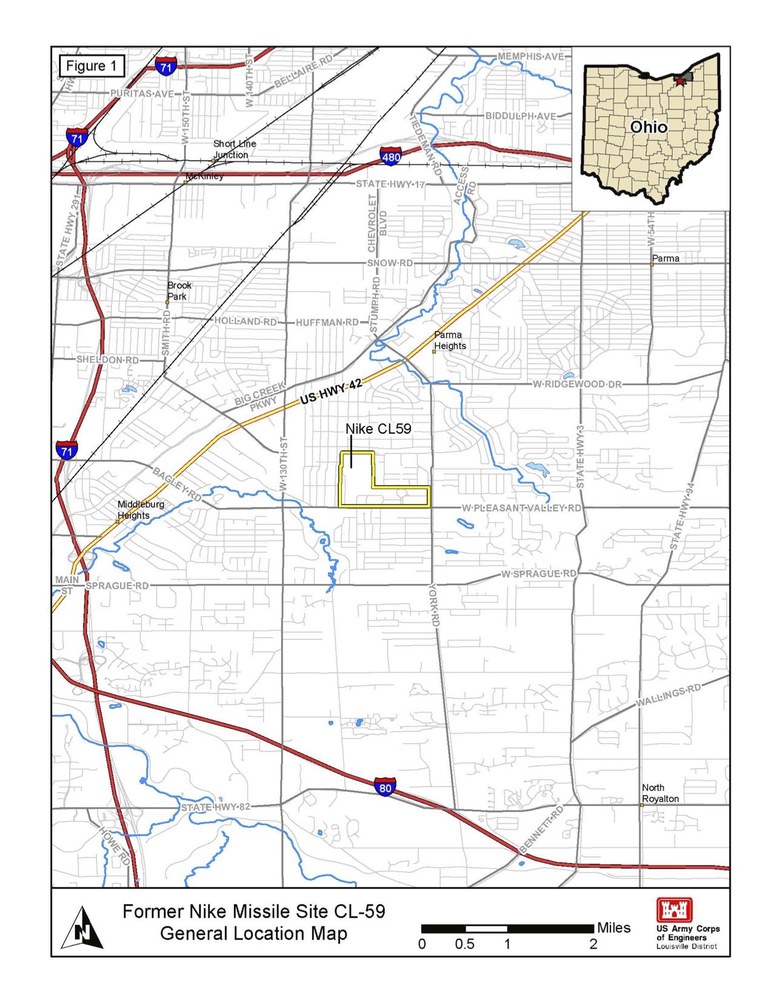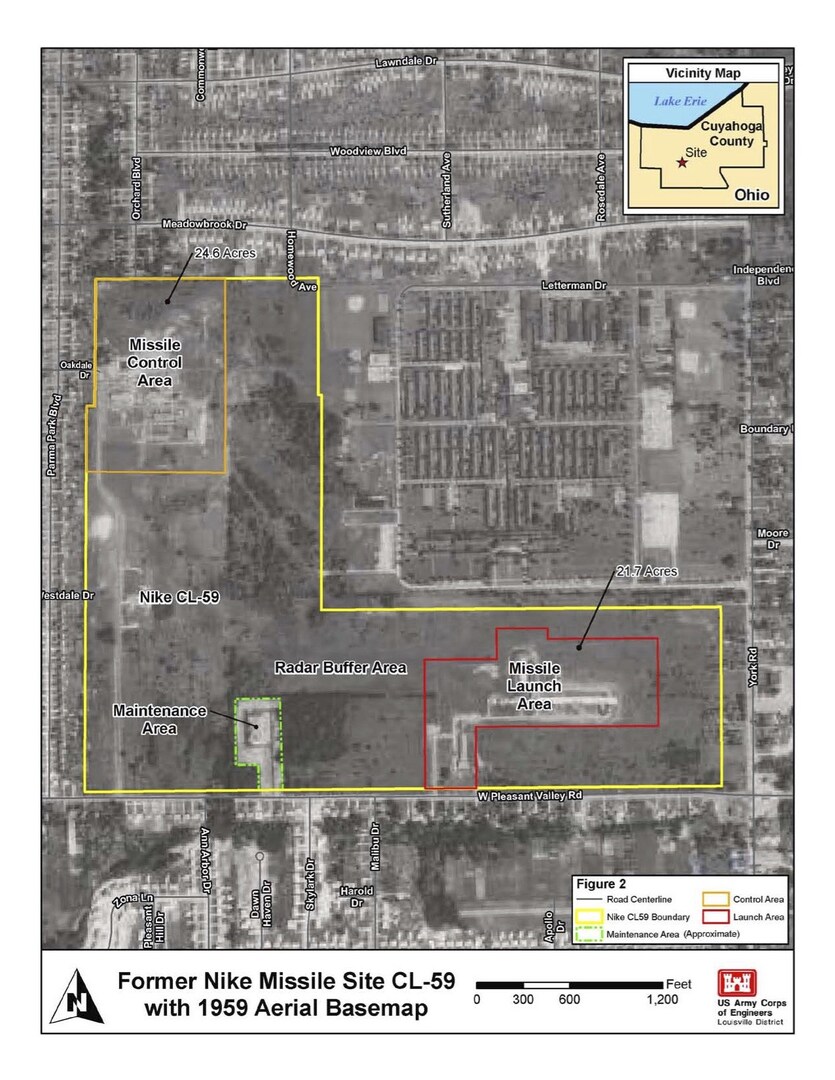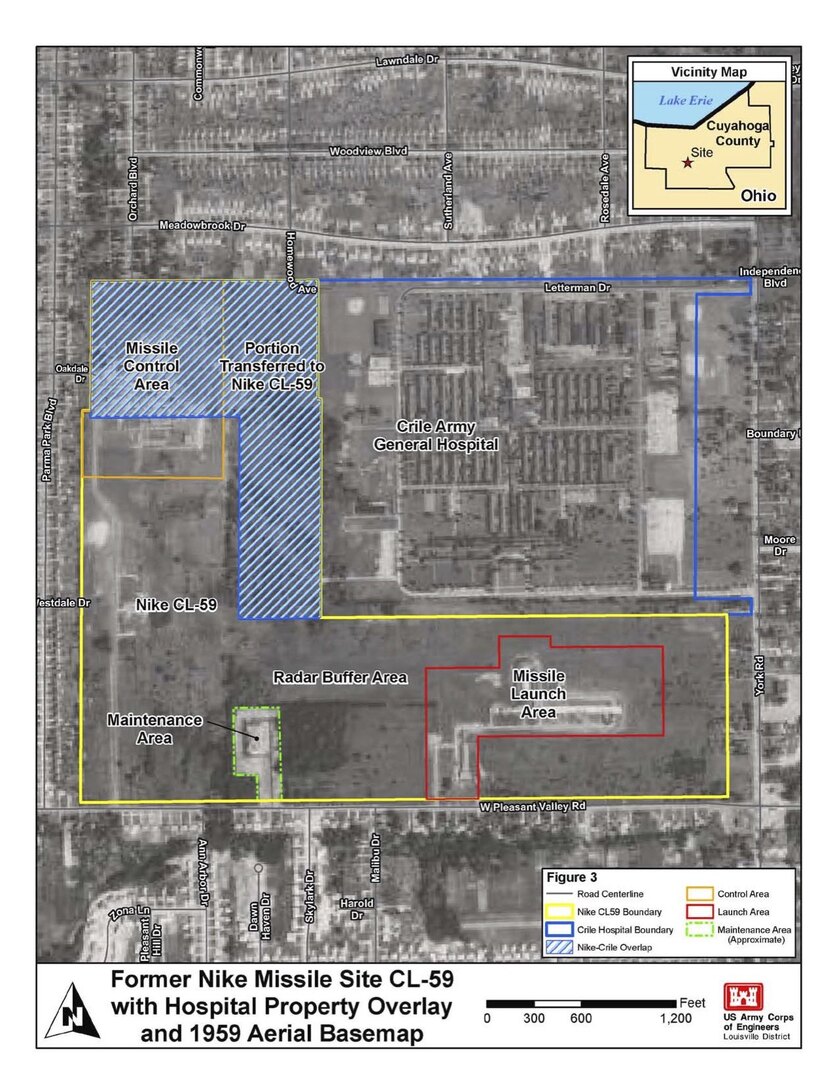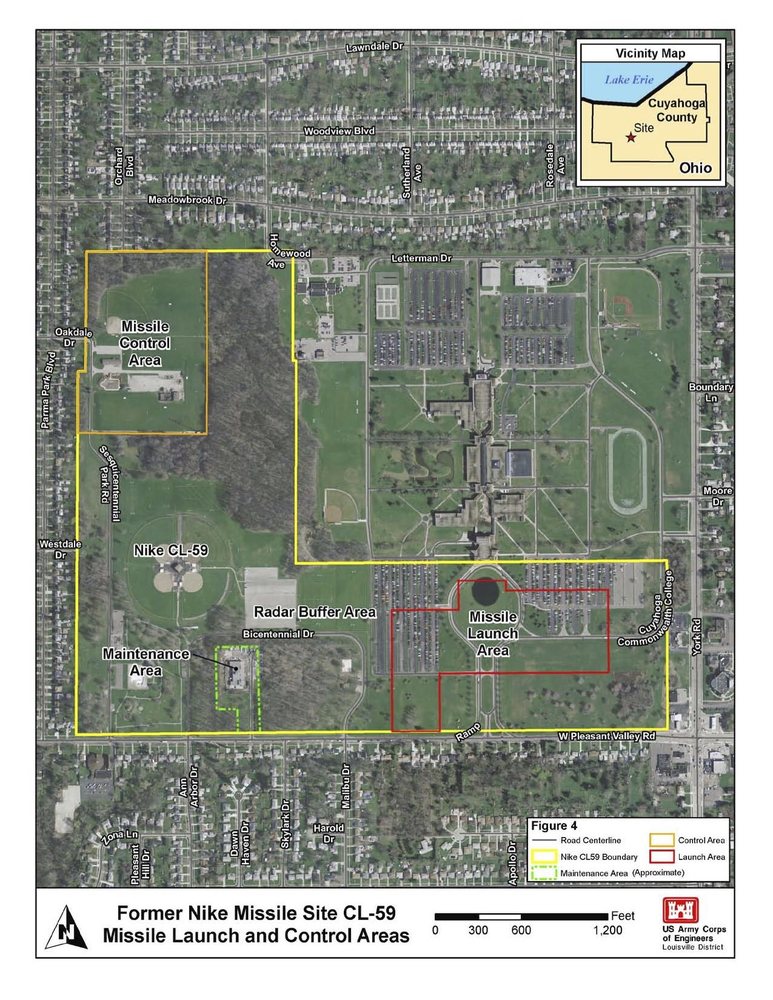
By the year 1956, the United States and the Soviet Union had been engaged with one another in the Cold War for almost a decade. Although there was no direct confrontation between the two world superpowers, the development of weapons and defense systems was heating up heading into the 1950s. Cleveland and its surrounding suburbs played a part in the Cold War narrative due to the fact that eight Nike missile installations were active in and around the city itself during the late 1950s and early 1960s. Among these installations was one in the West Side suburb of Parma Heights. Designated as Nike Site CL-59 by the U.S. Army, it was tasked with protecting that particular part of Northeast Ohio from the perceived Soviet threat.
The Army officially activated Nike Site CL-59 in 1956, and by July of that year, the base was capable of launching the cutting-edge Nike Ajax missile at incoming Soviet bombers. However, as technology advanced during the Cold War, soon there was a bigger and deadlier weapon which would replace the Nike Ajax missile. This new missile was named the Nike Hercules and was considered more capable of taking out a greater number of Soviet aircraft and could also be equipped with a nuclear warhead. Nike Site CL-59 was retrofitted to accept this new technology following its tenure being armed with the Nike Ajax missile.
As far as the base itself, the installation could be split into two major sections. One section was referred to as the ‘Control Area’ while the other was the ‘Launch Area.’ The control area was primarily where military personnel worked and spent much of their time and included amenities such as a mess hall and a barracks where soldiers lived. The other portion, referred to as the launch area, has a fairly self-explanatory purpose. The missiles themselves were located here, as well as an underground storage apparatus for them and their launchers which actually propelled the missiles skyward. The storage of fuel and waste products was also located in this section in the form of underground tanks.
Nike Site CL-59 occupied 187.2 acres in an area located near primarily residential-zoned property as well as Crile Hospital to the east. During the base’s heyday, an interesting intersection of military and civilian life occurred there in the form of dances and even beauty pageants which were held in or in close proximity to the base itself and involved servicemembers stationed there. Additionally, there was even an organized basketball team made up of some servicemembers from the ‘B Battery’ section of the base who played other local teams.
Nike Site CL-59’s tenure in the Parma – Parma Heights area was fairly short, though, due to the fact that it was only formally active from 1956-1961. The years following CL-59’s deactivation were filled with discussion and debate as far as what the land should become when the military was finished with it. Most bases in the Cleveland area were re-designated into areas having to do with education or recreation, and as fate would have it, land occupied and in close proximity to CL-59 became both of these things.
Following the base’s peak, the area the site once stood on was divvied up amongst various local entities, and the creation of recreational areas such as public parks occurred. Nike Park, located on Pleasant Valley Road, as well as Nathan Hale Park were two such locations born out of what used to be a military base which at one point had the potential to launch nuclear missiles. Another notable structure located in close proximity to Nike Site CL-59 is Cuyahoga Community College’s Western Campus. The institution, which was first completed in 1965, is actually on land which was primarily Crile Hospital. However, the fact that Tri-C West is the closest modern structure to what used to be the base’s launch area is most certainly a fact most students studying there are not aware of and makes for an interesting bit of area trivia.
Another aspect of the former location of Site CL-59 involves the removal of two underground storage tanks which at one point housed potentially dangerous fluids such as fuel and acid. This action occurred in the year 2000, a full thirty-nine years after the base was formally deactivated in 1961. It is important to note that at this point, all of the recreational and educational facilities which were planned for the former missile site’s location had been present for a number of years themselves. The U.S. Army Corps of Engineers was involved in the removal of the tanks, and the local citizenry was also made to be a part of the entire event, with public forums and the like being held.
All in all, although Nike Site CL-59 itself can most certainly be considered a relic of the Cold War, what became of the area is something quite different than what the land was originally meant for. Although the base itself disappeared decades ago, the strategic defense it once provided for part of the local area has not been forgotten by those who consider themselves Cold War historians. Also, it is worth pointing out the juxtaposition between the area when it was occupied by tools of warfare versus what it consists of now. Today, what used to be CL-59 is made up of facilities which are used to educate students and serve as recreational areas for local citizens, a far cry from the destructive objects which once occupied the land.
Images







